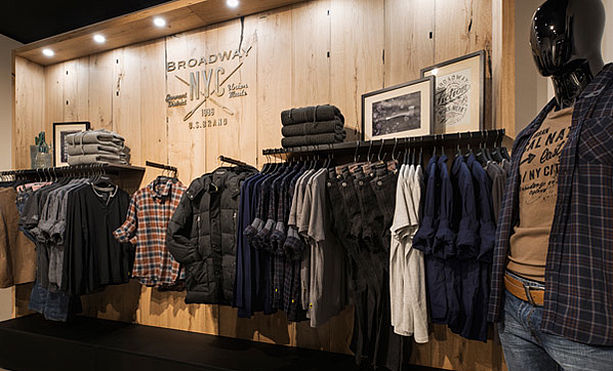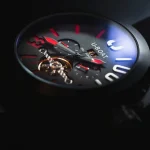In the retail world, first impressions matter. How your store looks and feels can significantly influence customer behaviour, affecting everything from foot traffic to sales. This is where shop fitting and visual merchandising come into play. Together, these two elements create an inviting and engaging shopping environment that enhances the overall customer experience. This article will explore the relationship between shop fitting and visual merchandising and how they work together to drive retail success.
Understanding Shop Fitting
Shop fitting refers to the process of designing and installing fixtures and fittings in a retail space. This includes everything from shelving and display units to lighting and signage. A well-executed shop fitting process is crucial for creating a functional and appealing retail environment.
Key Objectives of Shop Fitting
- Space Utilisation: Maximising the available space to ensure efficient product display and easy customer navigation.
- Brand Representation: Reflecting your brand’s identity through design, colours, and materials.
- Safety and Compliance: Ensuring that the store meets safety regulations and provides a safe shopping experience for customers.
Effective shop fitting serves as the foundation upon which visual merchandising can build, setting the stage for an engaging retail experience.
Understanding Visual Merchandising
Visual merchandising is the art and science of displaying products in a way that attracts customers and encourages purchases. This involves strategic placement, creative displays, and effective use of lighting and colour. The ultimate goal of visual merchandising is to create a compelling shopping environment that enhances the customer experience.
Key Elements of Visual Merchandising
- Product Placement: Strategically positioning products to grab attention and encourage impulse buys.
- Display Techniques: Using fixtures, props, and signage to create attractive and informative displays.
- Seasonal Themes: Adapting displays to reflect seasonal changes, promotions, or new product launches.
Visual merchandising enhances the impact of shop fitting by bringing the store’s design to life, making it more engaging for customers.
The Perfect Partnership: Shop Fitting and Visual Merchandising
The synergy between shop fitting and visual merchandising is what creates a truly captivating retail space. Here’s how these two elements work together effectively:
Cohesive Design
A well-fitted shop provides the necessary framework for visual merchandising to shine. Cohesion between the design elements and product displays is essential for creating a unified shopping experience. For instance, if your brand identity is centred around a rustic theme, both the fixtures and the product displays should reflect this style.
Optimised Space for Display
Effective shop fitting maximises available space, ensuring that products can be displayed prominently without creating clutter. This allows for clear sightlines and easy navigation, making it easier for customers to engage with your merchandise. Visual merchandising can then utilise this optimised space to create attractive displays that draw customers in.
Enhancing Customer Flow
The layout of your shop, defined by shop fitting, directly impacts customer flow. A well-planned layout encourages customers to explore the entire store, increasing their chances of discovering products they might not have initially intended to buy. Visual merchandising can guide this exploration by using focal points and eye-catching displays at strategic locations throughout the store.
Practical Tips for Combining Shop Fitting and Visual Merchandising
To effectively integrate shop fitting and visual merchandising in your retail space, consider the following tips:
Design for Flexibility
Invest in versatile fixtures that can be easily reconfigured to accommodate changing products or seasonal displays. This flexibility allows you to adapt your shop fitting to support various visual merchandising strategies throughout the year.
Use Lighting Strategically
Lighting plays a crucial role in both shop fitting and visual merchandising. Proper lighting can highlight key products and create an inviting atmosphere. Consider using a combination of ambient, task, and accent lighting to enhance product displays and overall store aesthetics.
Create Zones
Organise your retail space into zones based on product categories or themes. This allows for more focused visual merchandising efforts and helps customers easily find what they’re looking for. Clear zones can also help you create themed displays that resonate with your target audience.
Incorporate Brand Elements
Make sure that both shop fitting and visual merchandising reflect your brand identity. Use your brand colours, logos, and messaging consistently throughout your store to create a cohesive experience that reinforces brand recognition.
Stay Current with Trends
Both shop fitting and visual merchandising are influenced by industry trends. Stay informed about the latest developments to ensure your store remains fresh and appealing. Attend trade shows, read industry publications, and connect with other retailers to keep your store ahead of the curve.
Measuring Success
To ensure that your integration of shop fitting and visual merchandising is effective, it’s important to measure success. Here are some methods to assess the impact of your efforts:
Sales Analysis
Monitor sales data to identify trends related to specific product displays or layouts. If certain areas of your store generate higher sales, consider what shop fitting or visual merchandising strategies contributed to that success.
Customer Feedback
Engage with customers to gather feedback on their shopping experience. Use surveys, comment cards, or informal conversations to understand their perceptions of your store layout and displays.
Observational Studies
Conduct observational studies to analyse customer behaviour in your store. Pay attention to how customers navigate the space, which displays attract their attention, and how long they spend in various areas. This information can inform future adjustments to your shop fitting and visual merchandising strategies.
Conclusion
The partnership between shop fitting and visual merchandising is vital for creating an inviting retail environment that attracts and retains customers. By understanding the roles each element plays and how they complement one another, you can design a retail space that not only looks good but also drives sales.
Investing in professional shop fitting services and developing effective visual merchandising strategies will enhance your store’s appeal and create a memorable shopping experience. As you work to integrate these elements, remember to remain adaptable and responsive to customer feedback and market trends. With the right approach, your retail space can thrive in today’s competitive landscape, providing customers with an enjoyable and engaging shopping journey. Read More
















